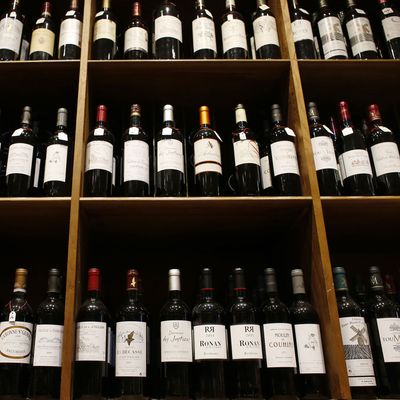
Unlike certain beers, or any and all neutral spirits, wines aren’t bought purely for their alcohol content. Good thing, it looks like: A mega study of more than 127,000 bottles discovered a troubling little secret about that ABV label on the side — chances of it being wrong are crazy high. The reasons vary, the study’s authors tell the Washington Post, but what’s pretty constant is that this industry-wide snow job seems to have been going on for at least two decades.
The study, conducted by a team at the University of California, Davis, looked at about 80,000 reds and 47,000 whites imported to Canada between 1992 and 2009. Almost 60 percent of the producers underreported their ABVs to look less alcoholic, and about 20 percent overreported it, each hoping the concocted number would appeal to certain sets of wine shoppers. For those fuzzy on the math here, that means about one in five bottles got it right.
The miscalculated amount fluctuated — so-called Old World wines were about 0.1 percent too low, but winemakers in Chile (under by an average of 0.27 percent), Argentina (under by 0.24), and the U.S. (under by 0.23) were particularly generous with their labels. These tricks, by the way, are totally legal because laws give winemakers a very gracious range — much more than what breweries get — that the ABVs on labels can be off by. If the declared ABVs are charted, they fall pretty neatly into about six different percentages between 12 and 15, even though their real ABVs run from 10 to more than 16, just all over the map.
What makes the findings all the weirder is that, according to the study’s same numbers, wines have also been getting boozier across the board — from 12.7 percent ABV in 1992 to 13.8 percent in 2009. Some of this could be ecological (climate change can up the sugar content in grapes, making wines more alcoholic), but it’s also the case that more people say they want sweeter, fuller-bodied wines, which tend to have more alcohol. The problem is people want it both ways: They also say they don’t want more alcohol in their wines, which gives winemakers an incentive to fudge the numbers.
[WP]




